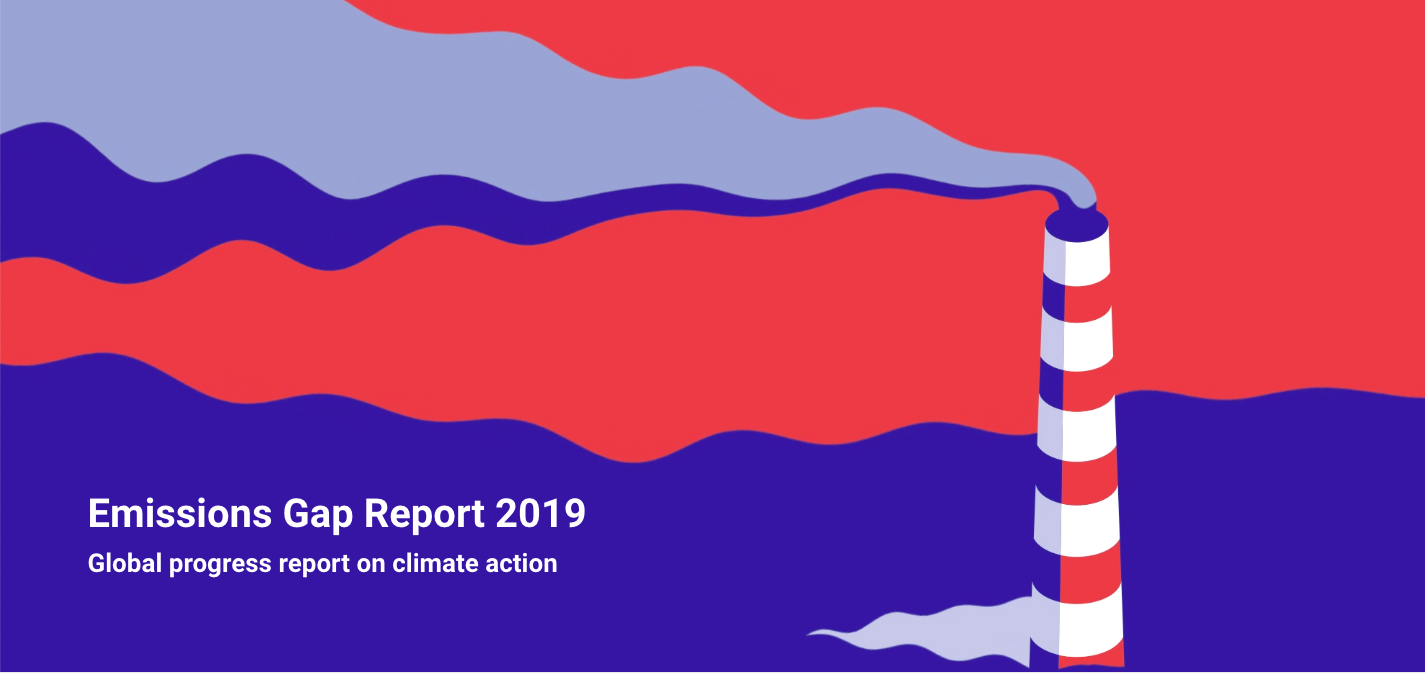 A new report by the United Nations Environment Program shows that urgent action is needed to reduce climate pollution and prevent the worst impacts of global warming. The annual Emissions Gap report, released earlier this week, compares the pledges of pollution reduction that countries have already pledged to against the amount of pollution reduction that must take place in order to avoid warming of 1.5° or 2° Celsius. Their conclusion: the world needs to dramatically step it up.
A new report by the United Nations Environment Program shows that urgent action is needed to reduce climate pollution and prevent the worst impacts of global warming. The annual Emissions Gap report, released earlier this week, compares the pledges of pollution reduction that countries have already pledged to against the amount of pollution reduction that must take place in order to avoid warming of 1.5° or 2° Celsius. Their conclusion: the world needs to dramatically step it up.
Key findings include:
- “We are on the brink of missing the opportunity to limit global warming to 1.5°C.”
- “If we rely only on the current climate commitments of the Paris Agreement, temperatures can be expected to rise to 3.2°C this century. Temperatures have already increased 1.1°C, leaving families, homes and communities devastated.”
- “We need to close the ‘commitment’ gap between what we say we will do and what we need to do to prevent dangerous levels of climate change. Governments cannot afford to wait. People and families cannot afford to wait. Economies must shift to a decarbonization pathway now.”
- “Scientists agree that to get on track to limit global temperature rise to 1.5°C, emissions must drop rapidly to 25 gigatons by 2030 […] Our challenge: based on today’s commitments, emissions are on track to reach 56 Gt CO2e by 2030, over twice what they should be. […] Collectively, if commitments, policies and action can deliver a 7.6% emissions reduction every year between 2020 and 2030, we CAN limit global warming to 1.5°C. […] Every day we delay, the steeper and more difficult the cuts become. By just 2025 the cut needed would will be 15.5% each year, making the 1.5°C target almost impossible.”
- “Most nations are expected to strengthen their climate commitments in 2020. To date, 71 countries and 11 regions, accounting for about 15% of global GHG emissions in total, have long-term objectives to achieve net-zero emissions, differing in scope, timing and the degree to which they are legally binding. This leaves countries representing the remaining 85% of global GHG emissions still to make similar commitments. The G20 (a group of 19 countries, plus the EU) account for 78% of all emissions. Theirs is the biggest opportunity to lead the world into a thriving, renewable future.”
And what if we overshoot 1.5° C and hit 2° C of warming?
- “At 1.5°C, over 70% of coral reefs will die, but at 2°C virtually all reefs will be lost.”
- “Over 6 million people currently live in coastal areas vulnerable to sea level rise at 1.5°C degrees, and at 2°C this would affect 10 million more people by the end of this century.”
- “Insects, vital for pollination of crops and plants, are likely to lose half their habitat at 1.5°C but this becomes almost twice as likely at 2°C.”
You can see more about the difference in impacts between 1.5° and 2° of warming in the graphic by World Resources Institute (below).
SACE lauded the Paris Agreement when it was created four years ago as a framework for countries around the world to work together to achieve mutual success. It was clear at the time that the pledges did not go far enough to limit warming to 1.5° or 2°, but that the structure would be in place to incrementally speed up decarbonization as new national goals are submitted every 5 years. Some countries are making good on that potential, while others–most notably the U.S.–are not. For example, the United Kingdom and France have both passed legislation committing to net-zero carbon emissions by 2050, which is what the science demands to avoid exceeding 1.5° of warming. The Trump Administration, on the other hand is in the process of pulling out of the Paris Agreement and is likely ceding a leadership position in the global clean energy economy of the 21st century.
The new report makes clear: drastic action is needed to avoid the worst impacts of global warming and the United States needs to not only stay in the Paris Agreement, but significantly increase its commitments to reducing harmful climate pollution.
